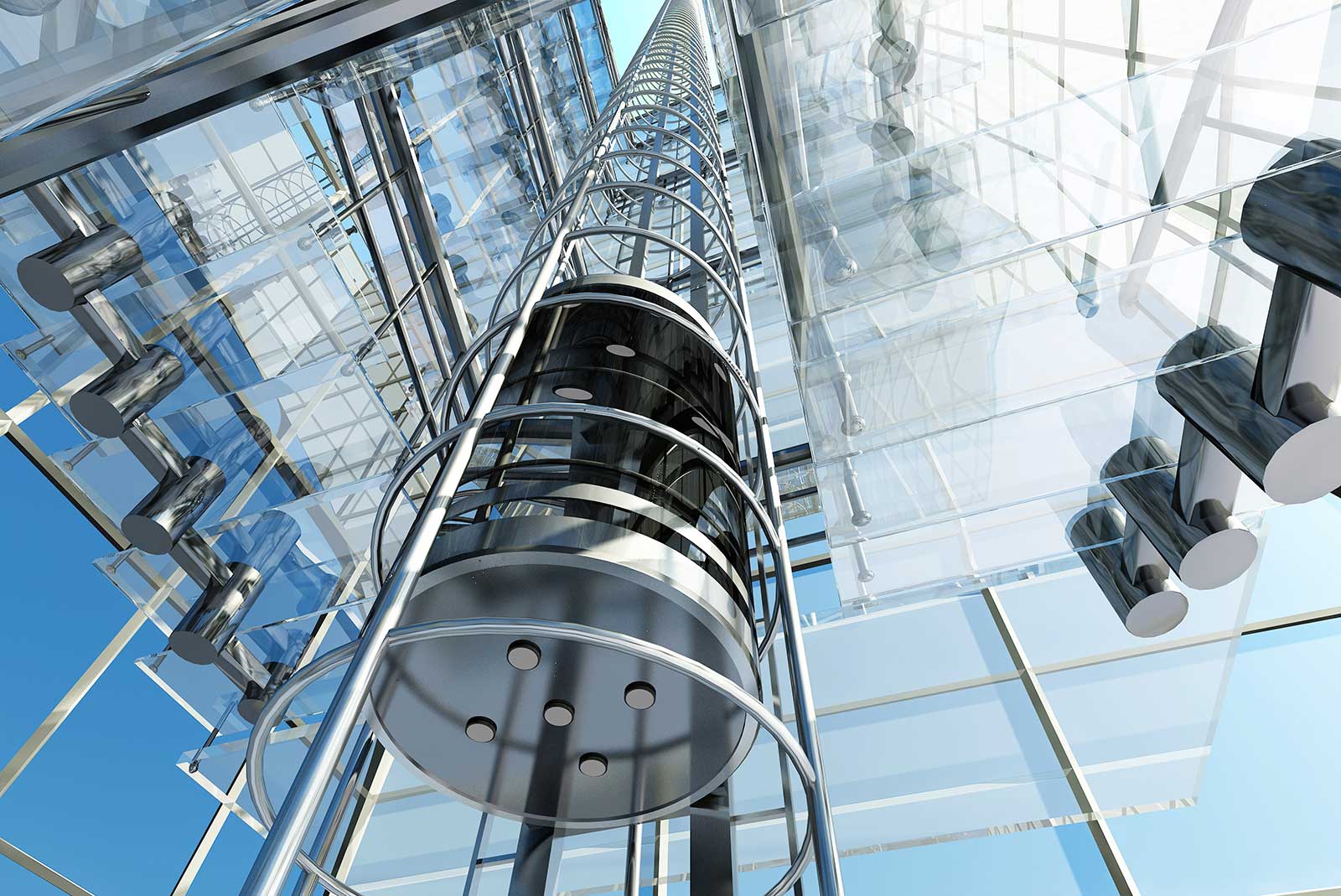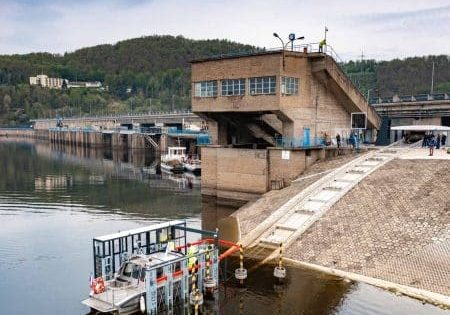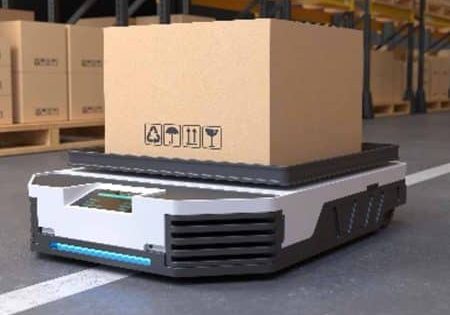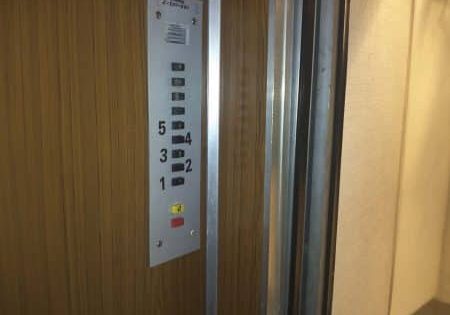Conceived by two men outside of the industry, Helical Motion’s Helix aims to revolutionize VT.
“A software implementation specialist and an urban planner walk into a bar” sounds like the beginning of an esoteric joke. But two gentlemen with these backgrounds have conceived a vertical-transportation (VT) system called Helix they believe has the potential to be a game-changer in the elevator industry. The name of their nascent company is Helical Motion, Inc. Based in Yonkers, NY, Habib Salim met Maurice LaBonne, who has since retired from a 40-plus-year career in real estate and New York facility development for nonprofits, when he lived a few doors down from him in Yonkers approximately 10 years ago. A few years later — on April 3, 2017, to be precise — Salim became interested in the late architect Fazlur Rehman Kahn when he was the featured Google Doodle. The Bangladeshi-American architect is considered the “father of tubular designs” for high rises and was considered a pioneer in computer-aided design.[1] It was Kahn’s tubular structural system that got Salim thinking about how the concept could lend itself to elevators. Helical Motion and its signature elevator system, Helix, was born the next year, and the pair have filed a patent application for their proposed system. Salim (HS) took the time to speak with your author (KW) and ELEVATOR WORLD, both via Zoom and email, about the concept and initiative.
KW: Please provide a professional background for each of you.
HS: I am an accounting software implementation and customization specialist in Yonkers. My father owned a few diverse businesses, so I had early, immersive exposure to various businesses before starting my own in 2003. I’ve been a lifelong tinkerer and dabbled in just about everything: woodworking, metal shaping, lampshades. My wife says I have to tweak and adapt things to suit my quirky needs. I was blessed/cursed with a rich imagination and have always asked, “What if?” That might explain how I came to this idea.
I’ve known Maurice for some 15 years. We met when he lived down the street from me. Trained as an urban planner, Maurice developed broad experience in guiding environmental reviews and obtaining land-use entitlements for numerous largescale development projects. He spent the bulk of his career as senior facility officer for three of New York’s academic health systems (Montefiore, Northwell and New York Presbyterian). Over the course of three decades, Maurice led the planning, design and construction of US$10 billion of inpatient and ambulatory care facilities and administrative offices. Maurice directed real estate strategies that led to innovative leasehold condominiums, enabling these nonprofit tenants to benefit from real property tax exemptions. He also led teams responsible for capital planning, regulatory compliance and facility operations.
Throughout his career, Maurice championed innovations including modular construction and prefabrication, innovative combined heat and power plants (CDP or co-generation) and novel project delivery methods such as integrated project delivery, or IPD, while promoting Lean practices. Among his public-sector contributions, he was the senior advisor to NYC Mayor Bloomberg’s taskforce formed to address how to create a more resilient NYC in the wake of Hurricane Sandy. Since his retirement, he’s also devoted his time to Hudson Medical Properties, a health facility development consultancy.
KW: Please provide an overview of Helical Motion’s Helix elevator system.
HS: The helical elevator system is a novel implementation of a screw. Inside a large tube with internal threading, an elevator cab attached to a disk with wheels rides on the thread, moving vertically as the disk spins. A motor attached to the elevator cab spins the disk. The stationary helical rail supports movement. The system’s design includes the following:
- The helical structure is assembled by joining two segments, each covering 120 degrees of the tube, leaving a 120-degree opening that can be configured as one wide opening or two 60-degree openings for ingress/egress. Each section is 3-ft high, has three pillars and several helical rails (determined by the pitch). These segments are stacked to the desired height.
- The elevator rides on a wheeled disk that rides on the helical rail. The wheels on the disk are arranged in a matching helical path. The weight of the cab ensures continuous engagement and load distribution, while minimizing friction.
- A high-torque, direct-drive motor attached to the elevator cab drives the wheeled disk, eliminating the need for external machinery.
KW: Besides the Helix being a giant tube threaded on the inside, and a load platform on a rotating disk, what are other key differences between it and MULTI and Hyprlift (a self-propelled, ropeless elevator solution [EW, February 2024])?
HS: MULTI and Hyprlift are excellent new ideas. From what little I can gather from their videos and website, Hyprlift is traction-based, while MULTI uses magnetic levitation. Both use rails to guide movement with the elevator car cantilevered from the rail.
Hyprlift relies on friction to maintain a tight grip on the rail as the elevator car rolls vertically. MULTI does not use friction. The elevator is held in place by a carefully calibrated magnetic force. In these two systems, the direct vertical lift must counter the effect of the weight (gravity). Increasing weight capacity requires a corresponding increase in friction for Hyprlift and magnetic force for MULTI. This can be punishing.
Helical Motion’s novel use of screw propulsion is unlike any other solution in one key way: It leverages gravity instead of opposing it. The elevator car rides on a set of wheels that ride on the rail. This is significant because:
- The elevator car is always supported by the helical rail. The rail acts as a floor that can support heavy weights, like a rail car. Gravity keeps the car on the track.
- The wheels minimize friction and spread the load across a wide area.
- Movement is analogous to traversing an inclined path. Spreading the lifting force over a longer path, the force required at any instant is reduced. This is beneficial for motor sizing and energy consumption. The simple, well-known design and few moving parts contribute to lower operating costs and easy maintenance.
KW: What are some of its advantages?
HS: The Helix is like a giant ball screw drive, which has these advantages:
- High load capacity: Screw drives handle heavy loads efficiently, making them suitable for applications requiring significant force or weight support.
- Reduced friction: Wheels on the disk minimize friction and distribute the load along the rail.
- Safety: Screw drives have self-locking properties, meaning they can hold a load in place without requiring additional braking mechanisms. Movement ceases with motor stoppage.
- Precision, stability and controlled motion: The screw provides smooth controlled vertical movement, reducing the risk of jerks and misalignment common in traction systems and enhancing ride comfort for passengers.
- Energy efficiency: Screw drives efficiently convert rotational motion to linear motion, reducing power consumption. Thanks to the mechanical advantage from screws, movement requires only the energy needed to traverse an inclined path. (Also, without the weight of traditional cables.)
- Space efficiency: Helical elevators can fit into compact spaces. This makes them ideal for applications with space constraints. With shunting, fewer elevator shafts are needed, reducing the amount of floor space used by the elevator system.
- Scalability: Sections of helical rails can be added as needed. Modular design ensures that sections can be precision manufactured and shipped to the site and installed in sections by trained personnel.
- Reduced reliance on cranes: Installation can begin when construction commences. The elevator can transport heavy building materials during construction and grow with the building.
- Low complexity: Although it is new, the Helix is based on well-known principles. The system has few moving parts, and its lightweight design contributes to lower operational and maintenance costs.
KW: What are some of its innovative features?
HS: The novel use of a tubular screw and discontinuous thread is the key insight. Other features include:
- Parallel shafts: Two shafts with shunting mechanisms to enable multiple cars to operate in both shafts for continuous operation
- Curvilinear paths: Slight variations in pitch allow the elevator to follow curvilinear paths.
- High load capacity: This may turn out to be the defining advantage.
KW: What about the power supply?
HS: An electrified rail backed by a battery could be the ideal way to power the motor, but lots of other possibilities exist. A small elevator could conceivably be run on pedal-power or as a backup to the backup battery!
KW: What are the main considerations regarding implementation?
HS: The usual considerations such as safety, capacity and demand, as well as structural, engineering and architectural design constraints must still be answered, but the specifics change. A few new ones are:
- Shunting mechanisms: Which will require precision design and reliable operation
- Control system: Advanced algorithms for dynamic routing and efficient flow management
I expect that the Helix will be priced about the same as a conventional system and deliver cost savings over the long run.
KW: Describe Helical Motion’s Helix in a nutshell.
HS: The Helix offers a novel, efficient solution for VT in tall buildings, reducing space requirements and enhancing operational efficiency and achieving new heights. Leveraging the screw with advanced engineering and precise manufacturing, it promises to revolutionize how elevators operate, from the simple home elevator to complex systems in modern high rises.
KW: When and how did the concept come about?
HS: In 2017, I saw a Google Doodle on Fazlur Rehman Khan. I was fascinated by Khan’s story and his signature tubular structures. It was around that time that I was daydreaming at my desk and this idea came to me: a disk revolving inside a tube, propelling people. I remember making a few crude drawings and talking to a few people about it, but it was too early. It took me a while and many iterations to work out the details. The shunting mechanism, for example, came much later.
This idea seemed so obvious, so self-evident, that I thought it must already exist. It would resurface often; I would do a few Google searches and put it away, intending to do more later. One day in July 2022, I was telling my friend Maurice about this idea that kept nagging me. And with that, the game was on.
KW: Which type of company do you envision manufacturing the precision components?
HS: While the elevator requires precision manufacturing, just about any well-run engineering shop will be able to crank out these parts with little difficulty. I do not see manufacturing to be an issue if we use a reputable manufacturing company.
KW: Would new elevator codes have to be written for this technology? How much of a roadblock would that be?
HS:The three big roadblocks are:
- Safety testing: UL and other independent labs can test and validate.
- Updating standards: Several organizations have standards covering elevators and related systems. Examples include the International Code Council, International Organization for Standardization, American Society of Mechanical Engineers, National Fire Protection Association and American Society of Civil Engineers.
- Building code updates: Building codes exist in multiple jurisdictions — municipal, city, state and national. Repeat for every country.
KW:Which safety features will the system boast?
HS:Safety is not a concern today. Traditional traction (Otis-style) elevators have an excellent safety record. That said, this design may, theoretically, be even safer than the traction elevator simply because of the support from the helical rail.
KW:Please provide an idea of a typical system’s speed, dimensions capacity and travel distance.
HS: Elevators are limited to a speed of approximately 20 mph because of g-force effects on passengers. A freight elevator may conceivably move faster. We believe the Helix has the ability to achieve speeds that none of the other systems can match. Why? Because the load is traveling on an inclined plane. The vertical movement is a side effect.
We believe that we will see a whole new world of possibilities, such as elevators that are large enough to accommodate a whole tractor trailer and lift it to unprecedented heights. We also believe that the Helix will be available in every size available today. The Helix can easily be fitted to any existing elevator shaft, with almost no structural changes. Shunting will require a lot more.
As our population ages, there seems to be a growing demand for compact home elevators. It would be great to see helical elevators solving this need.
KW:What is your goal for Helical Motion? To secure funding/investors? If so, how are you going about that?
HS: Our goal is to secure funding and investors and bring this product to market quickly. The road ahead is long, and success will probably be achieved by partnering with established manufacturers, licensing the idea to them. We are confident that the idea is sound, and that a market exists. We have only begun this journey.
Reference
Get more of Elevator World. Sign up for our free e-newsletter.










